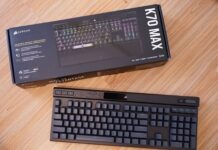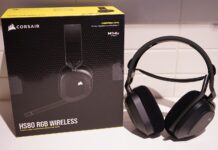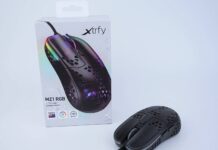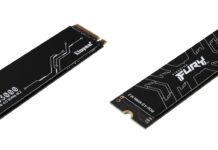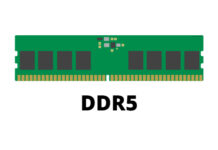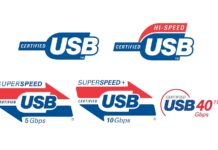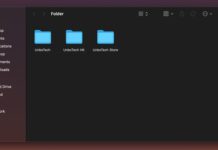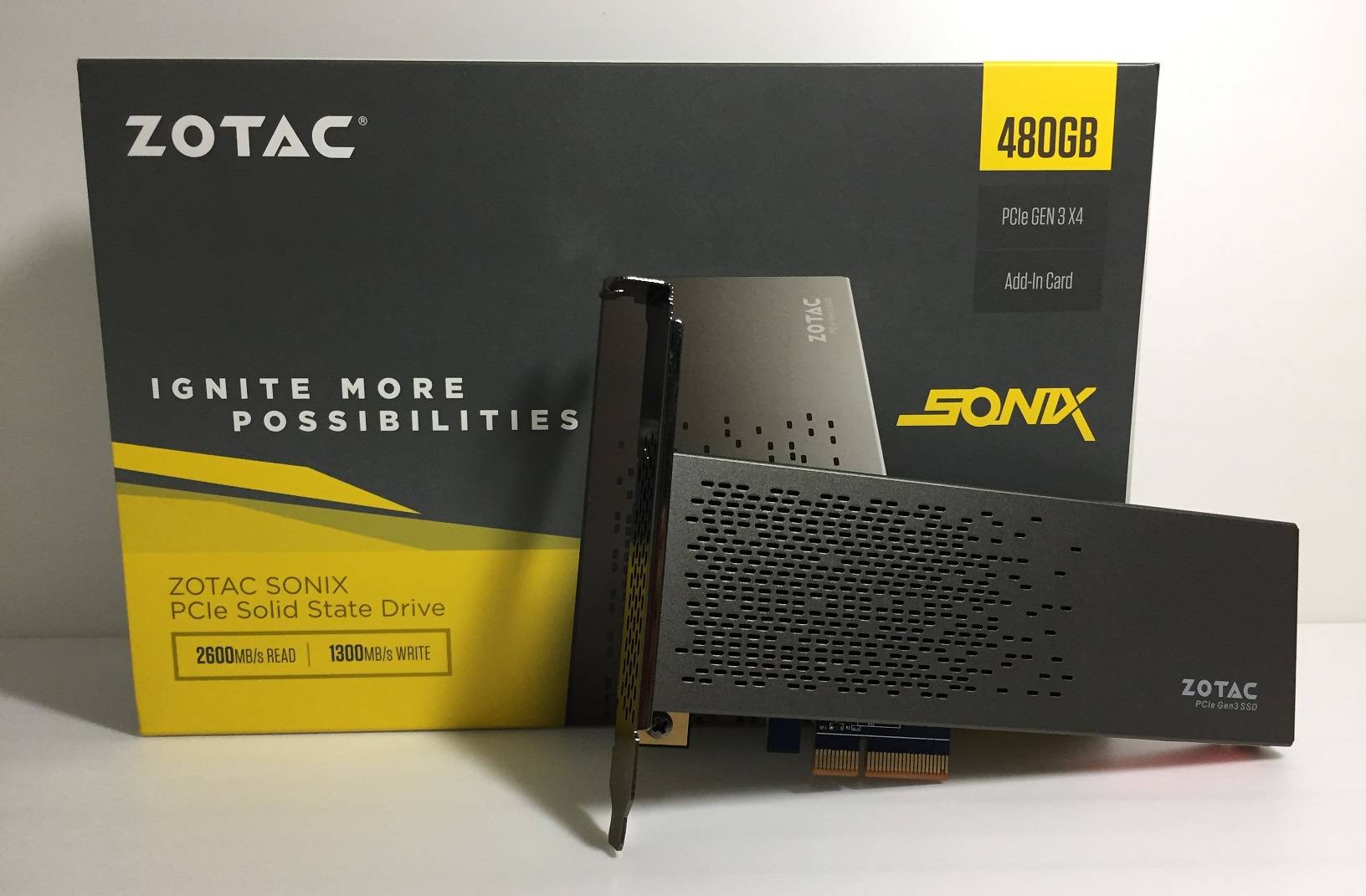
As solid-state drive establish its position in the storage market, any PC builders would consider purchasing at least one SSD for their system, to speed up the operating system. An ordinary SATA SSD already outperforms a traditional hard drive by a couple times (~200 MB/s vs ~500 MB/s). However, that speed is only limiting by the old SATA III interface (6 Gbps) and AHCI standard. That’s why NVMe and PCIe come into place, which ZOTAC SONIX 480GB SSD is using.
ZOTAC: Prepare for the silent silver bullet – the ZOTAC SONIX PCI-e SSD.
Specifications
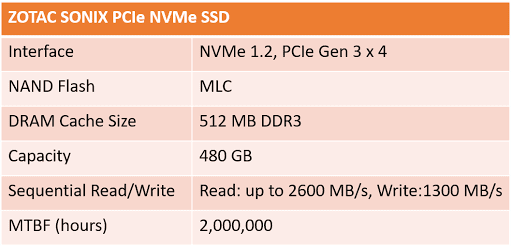
The SONIX SSD is launched back in 2016, using the NVMe version 1.2 standard. It is advertised to reach up to 2600 MB/s (read) and 1300 MB/s write, while rated for 2,000,000 hours MTBF for durability.
Unboxing
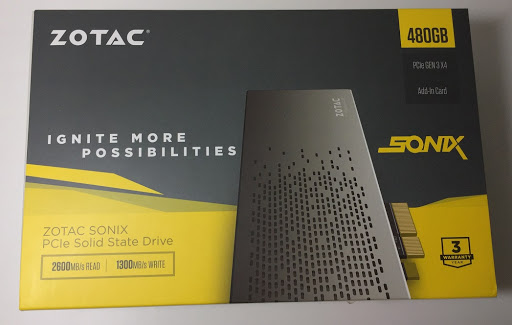
There is a paper sleeve covering the actual box of the SSD, with the common ZOTAC “black and yellow” color scheme. At the front shows both the model name and a picture of the drive, with the slogan “Ignite more possibilities”. The drive’s advertised performance is also printed on the sleeve.
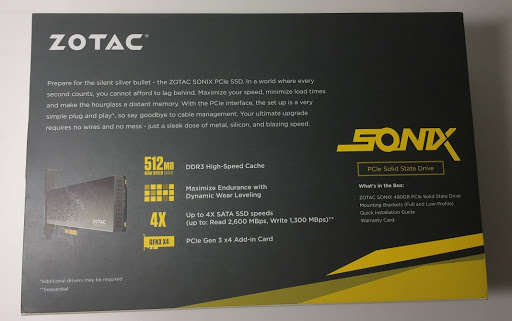
More details about the specifications are mentioned on the back, while the content inside the package is also indicated.
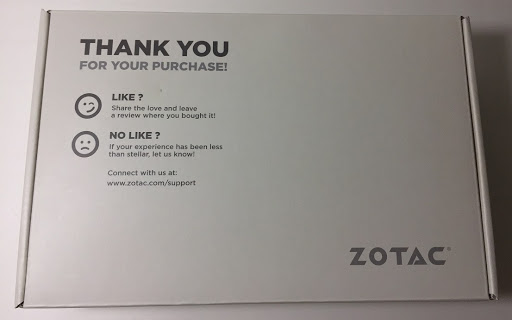
Take off the sleeve, you will see a white cardboard box written with thank you message from ZOTAC, as well as providing the support website if anything happens to the SSD.
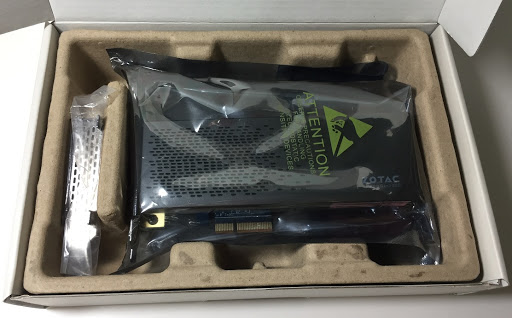
You will find the actual SONIX solid-state drive securely wrapped in a anti-static bag at the center, once you open the box.
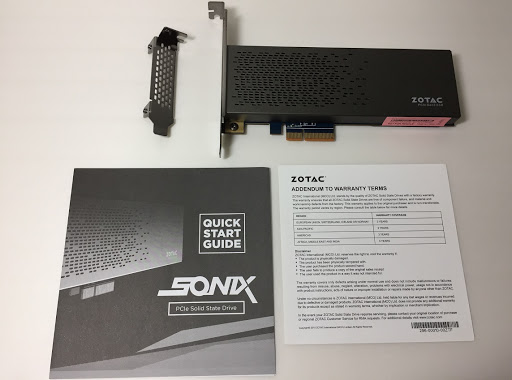
You can find the usual quick start guide and warranty information in the package. But there is also a low-profile adapter bundled, if you are using smaller mini-ITX PC cases.
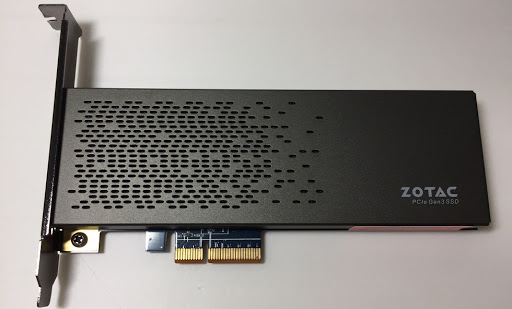
The whole SSD’s circuit board is covered by a matte grey aluminium hosing, with a tiny ZOTAC logo at the far right.
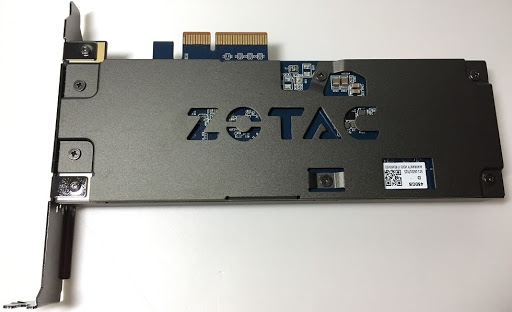
There is a metal back plate that is acting as a passive heatsink to provide additional cooling for the components underneath.
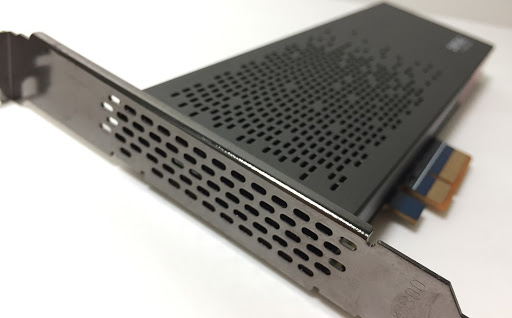
You will find a lot of ventilation holes throughout the external metal cover of the drive, including the PCIe bracket.
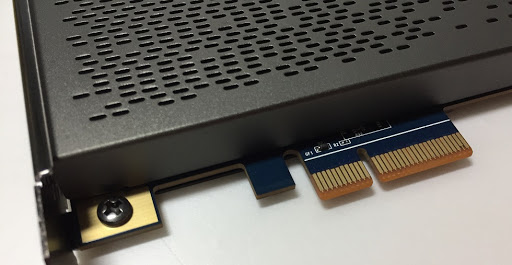
The PCIe Gen 3 x4 connector for the SONIX SSD, and its blue PCB.
Review
Testing Methodology
To test the performance of the solid-state drive, I uses three well-established storage benchmarking softwares. They are CrystalDiskMark, ATTO Disk Benchmark, as well as AS SSD Benchmark.
CrystalDiskMark can measure both sequential and random 4KB read/write speeds with a queue depth of 32. ATTO Disk Benchmark can test how the drive performs across different transfer block sizes, mostly in a sequential environment. AS SSD Benchmark can provide both normal read/write speed and the IOPS performance of the drive.
Performance
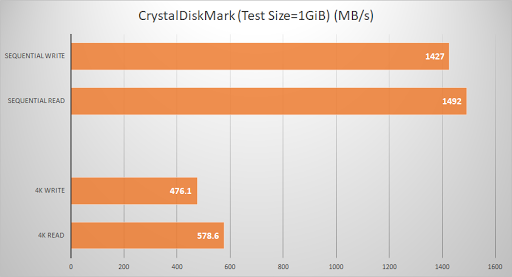
In CrystalDiskMark, the ZOTAC SONIX NVMe PCIe SSD is performing really well, although not as fast as its advertised speed. It reached nearly 1500 MB/s in sequential read speed, and about 1400 MB/s in sequential write. In random 4KB (Queue Depth 32), the SONIX SSD dropped down to 580 MB/s and 470 MB/s in read and write speed respectively. This is almost the full speed that a normal SATA SSD will achieve in sequential operations.
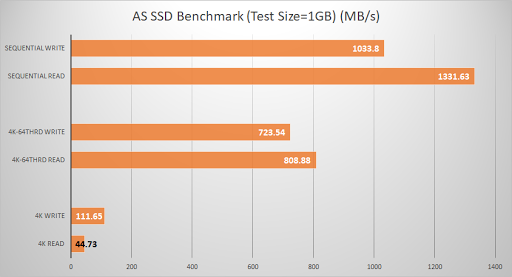
You will see a similar picture when using AS SSD Benchmark. The sequential read is at 1330 MB/s and write is at 1030 MB/s, slightly slower than in CrystalDiskMark. In 4KB random with a queue depth of 64 (64THRD), the read/write speed improved to about 700 to 800 MB/s. You will see a significant drop in perfromance in 4KB (Queue Depth 1). It is expected because the drive completed the transfer/read before it can reach full speed.
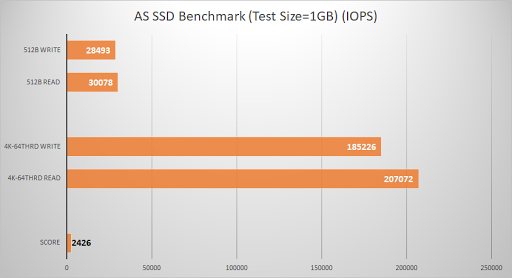
IOPS number represents how well a drive handles input and output operations. The SONIX SSD scored 2426 in AS SSD Benchmark’s IOPS test. It has over 207,000 and 185,000 IOPS in 4KB (Queue depth 64) read and write.
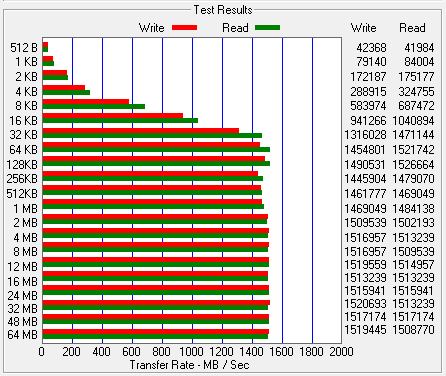
In ATTO Disk Benchmark, the SSD reached its ceiling when transferring file sizes larger than 64KB, reaching about 1500 MB/s in both read and write speed.
Conclusion
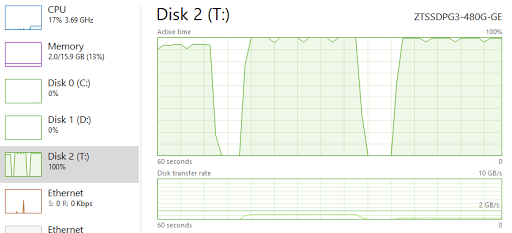
Yes, the ZOTAC SONIX PCIe solid-state drive is fast, averaging over 1000 MB/s read and write speed. However, the drive is about 1000 MB/s slower read speed than what ZOTAC advertised it (2600 MB/s). For some situations, CPU and RAM may be bottle-necking the SSD’s performance. But my CPU usage is at only 17%, while using 13% of RAM.The SSD is at 100%, running benchmarks. I am not sure if it is just this particular drive’s problem or driver issues or all SONIX drives are performing like this.
All things aside, the SONIX SSD has impressive read and write speed in both sequential and random operations. You will still get decent performance out of it, about 3 times faster than SATA solid-state drives, over 7 times quicker than SATA hard drives.
It is backed with a 3-year warranty. However, it is currently out of stock in many places. Maybe you will need to wait for a newer version of the ZOTAC SONIX PCIe SSD or a new model to available.

You can purchase the SSD from your local/online resellers or the links below from Amazon.
Thanks ZOTAC for providing us the SSD for review. (Review Sample)
Feel free to leave comments below, if you have any opinion about this website. Share the website around if you enjoy reading it. Subscribe to our Newsletter or follow our Twitter, Facebook and Instagram.
Support this website simply by shopping in Amazon and Newegg. It will give us small kickbacks, if you use the above affiliate links to make any purchases, which will help us grow.


